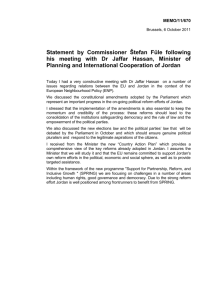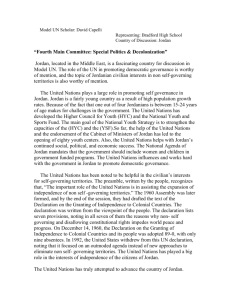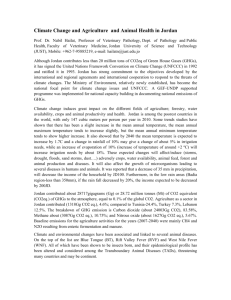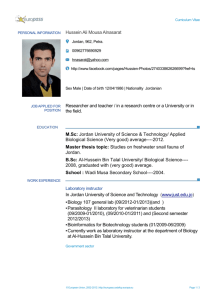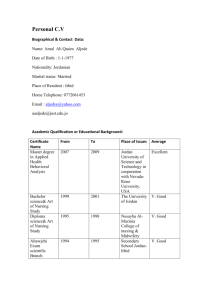Abstract for Clays Conference
advertisement
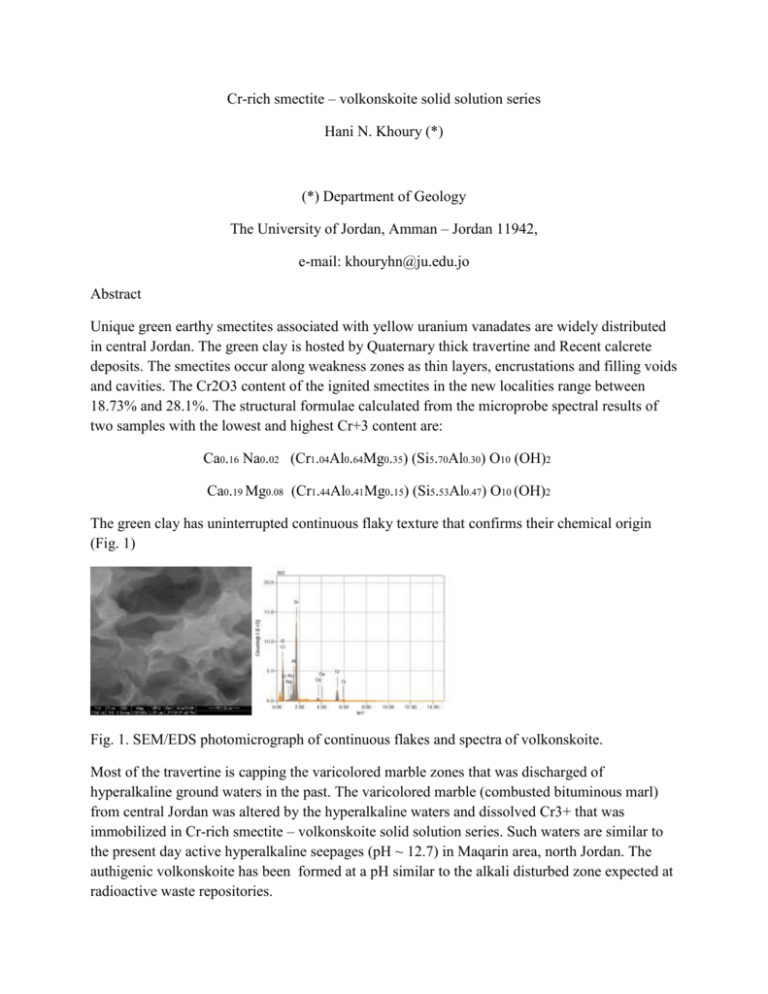
Cr-rich smectite – volkonskoite solid solution series Hani N. Khoury (*) (*) Department of Geology The University of Jordan, Amman – Jordan 11942, e-mail: khouryhn@ju.edu.jo Abstract Unique green earthy smectites associated with yellow uranium vanadates are widely distributed in central Jordan. The green clay is hosted by Quaternary thick travertine and Recent calcrete deposits. The smectites occur along weakness zones as thin layers, encrustations and filling voids and cavities. The Cr2O3 content of the ignited smectites in the new localities range between 18.73% and 28.1%. The structural formulae calculated from the microprobe spectral results of two samples with the lowest and highest Cr+3 content are: Ca0.16 Na0.02 (Cr1.04Al0.64Mg0.35) (Si5.70Al0.30) O10 (OH)2 Ca0.19 Mg0.08 (Cr1.44Al0.41Mg0.15) (Si5.53Al0.47) O10 (OH)2 The green clay has uninterrupted continuous flaky texture that confirms their chemical origin (Fig. 1) Fig. 1. SEM/EDS photomicrograph of continuous flakes and spectra of volkonskoite. Most of the travertine is capping the varicolored marble zones that was discharged of hyperalkaline ground waters in the past. The varicolored marble (combusted bituminous marl) from central Jordan was altered by the hyperalkaline waters and dissolved Cr3+ that was immobilized in Cr-rich smectite – volkonskoite solid solution series. Such waters are similar to the present day active hyperalkaline seepages (pH ~ 12.7) in Maqarin area, north Jordan. The authigenic volkonskoite has been formed at a pH similar to the alkali disturbed zone expected at radioactive waste repositories.

